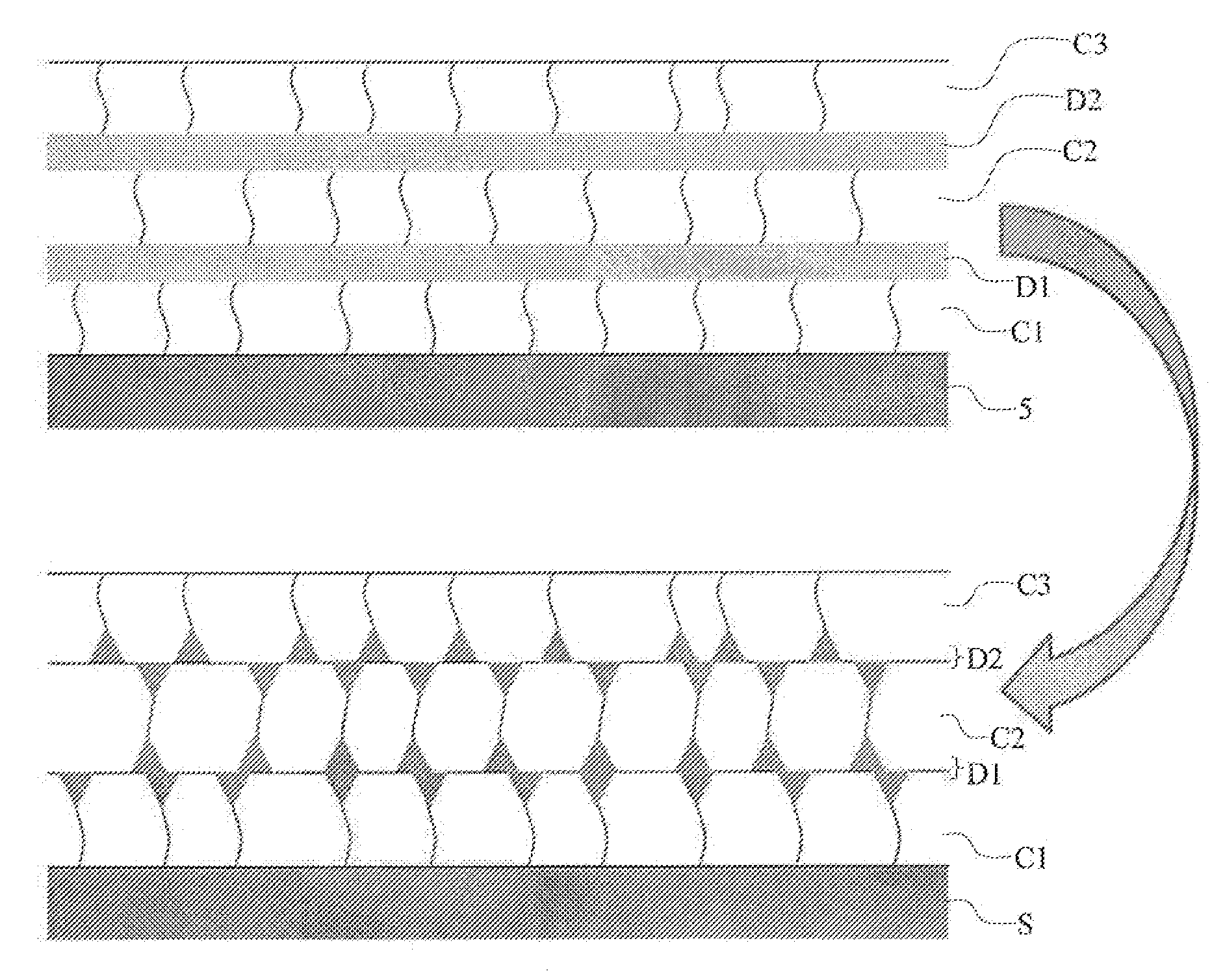Seebeck/peltier thermoelectric conversion device employing a stack of alternated nanometric layers of conductive and dielectric material and fabrication process
a technology of dielectric material and thermoelectric conversion device, which is applied in the direction of thermoelectric device junction materials, thermoelectric device manufacture/treatment, electrical apparatus, etc., can solve the problems of silicon nanowire devices being made with techniques unsuitable for industrialization on a large scale, and achieve the effect of relieving mechanical stresses
- Summary
- Abstract
- Description
- Claims
- Application Information
AI Technical Summary
Benefits of technology
Problems solved by technology
Method used
Image
Examples
Embodiment Construction
[0041]The exemplary embodiments presented herein below have an exclusively illustrative purpose and are not intended to limit the invention that can be practiced by any expert of the field even by modifying the deposition-oxidation processes or use different conductive or semiconducting materials and different dielectric materials.
[0042]Referring to FIG. 1, in building a multilayered stack of this invention, one may start depositing a first electrical conductive layer of doped silicon C1 of nanometric thickness over a substantially flat dielectric substrate S, for example a planar glass sheet, by vapor phase (CVD or LP-CVD) feeding in an low-pressure, heated deposition chamber silane (SiH4) and a suitable dopant compound such as PH3, AsH3 or B2H6, diluted in N2, at a temperature in the range of 600-800° C.
[0043]Such a first nanometric layer C1 doped silicon semiconductor may have a substantially uniform thickness of about 40-50 nm with little or no surface roughness.
[0044]Thereafter...
PUM
| Property | Measurement | Unit |
|---|---|---|
| thickness | aaaaa | aaaaa |
| thickness | aaaaa | aaaaa |
| thickness | aaaaa | aaaaa |
Abstract
Description
Claims
Application Information
 Login to View More
Login to View More - R&D
- Intellectual Property
- Life Sciences
- Materials
- Tech Scout
- Unparalleled Data Quality
- Higher Quality Content
- 60% Fewer Hallucinations
Browse by: Latest US Patents, China's latest patents, Technical Efficacy Thesaurus, Application Domain, Technology Topic, Popular Technical Reports.
© 2025 PatSnap. All rights reserved.Legal|Privacy policy|Modern Slavery Act Transparency Statement|Sitemap|About US| Contact US: help@patsnap.com



